J-54466 DEF REFRACTOMETER
Overview
To ensure the proper operation of the Selective Catalytic Reduction (SCR) system, operators must ensure the Diesel Exhaust Fluid (DEF) in their vehicle consists of a 32.5% urea/water solution.
- The 32.5% urea concentration is the ideal solution as it provides the lowest freeze point.
- SCR systems are calibrated to the 32.5%, so that optimum NOx will be reduced during operation. Therefore, SCR-equipped engines require the periodic addition of DEF to reduce nitrous oxide in the exhaust.
If you suspect the DEF concentration is not correct, using the DEF refractometer is a fast and easy way to determine the urea percentage.
The TITAN Service Manual lists this tool as a special service tool and TECH MATE lists it as required.
Using this tool is very much like the coolant refractometer you may have used before, but this one is specifically built for testing DEF.
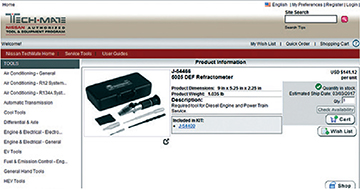
Using J-54466
If you are using J-54466 or OTC’s 5025 DEF Refractometer, the procedure is the same. Set up the refractometer by calibrating it and focus the eyepiece.
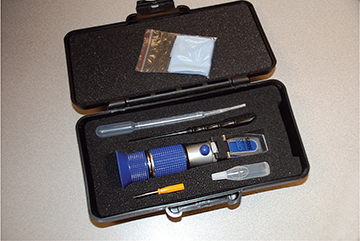
1. Place a few drops of the DEF in question on the sight glass, and close the cover.
2. Hold the tool toward a light source. The DEF casts a shadow, which is visible through the eyepiece.
3. Read the edge of the shadow on the scale in the viewer to determine the DEF concentration. The target reading is 32.5%.
- If under, more DEF concentration is needed.
- If over, the urea concentration is too high.
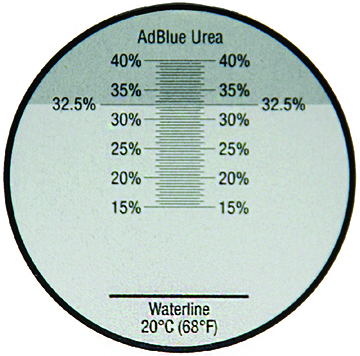
How the refractometer works
When a liquid sample is placed on the tool’s prism, the light passing through the sample is bent (refraction). The more concentrated the liquid, the more the light will bend.
With no liquid on the prism, the eyepiece view will reveal a light blue background with the graduated scale.
After a drop of liquid is placed on the prism, a darker “shadow” will appear at the top of the scale.
The point at which the bottom edge of the shadow hits the scale indicates the condition of the DEF sample.
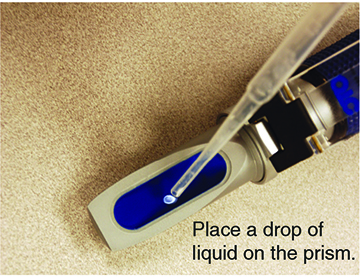
Calibration and focus
Focus adjustment
1. Aim the prism at a bright light.
2. Look through the eyepiece and adjust the focusing ring until the scale is sharp and clear, just as you would do with binoculars. Next, check the calibration.
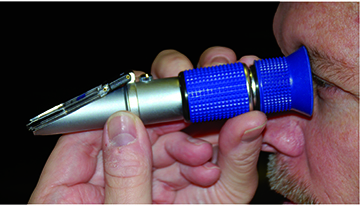
Calibration adjustment
1. Open the front plastic cover plate.
2. Clean the glass to remove any smudges, if necessary.
3. Hold the tool level and place one or two drops of pure distilled water onto the surface of the prism.
NOTE: It’s important to use only pure distilled water to set your zero calibration. Tap water, and even spring water can contain chemicals or minerals that may result in incorrect calibration.

1. Close the cover plate and press lightly.
2. Look through the eyepiece to see where the bottom of the shadow line is located.
- If the bottom of the shadow line meets the “waterline” mark at the bottom of the scale view, it is calibrated properly.
- If not, use a small screwdriver and turn the adjustment screw on top of the tool until the “waterline” mark is at the bottom of the scale view.

NOTE:
- The refractometer should be zeroed with pure water. To ensure consistent readings, the DEF-should be tested at the same ambient temperature.
- The refractometer is a precision instrument. After using, carefully clean and dry the prism, and pack it away in the storage case.
